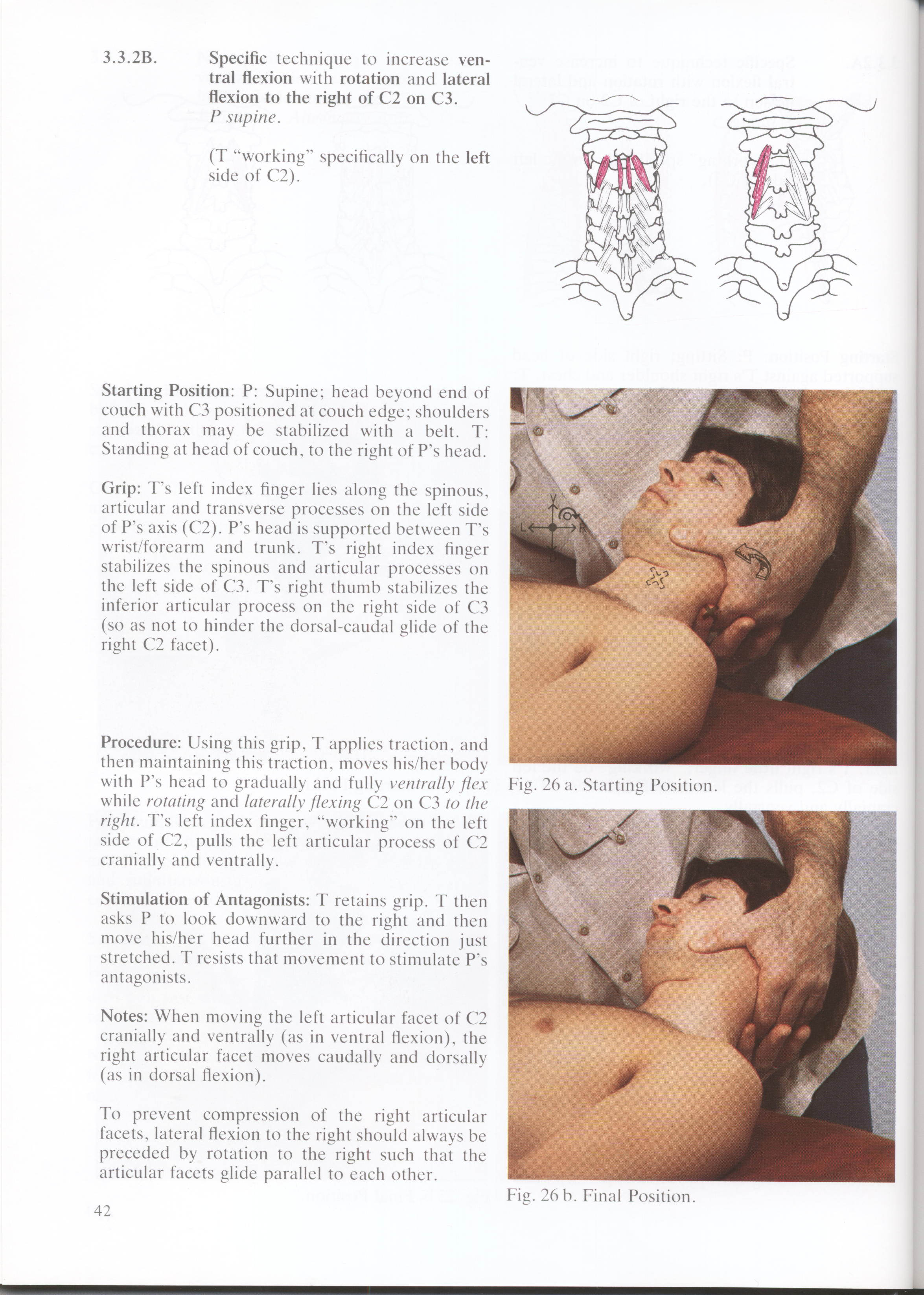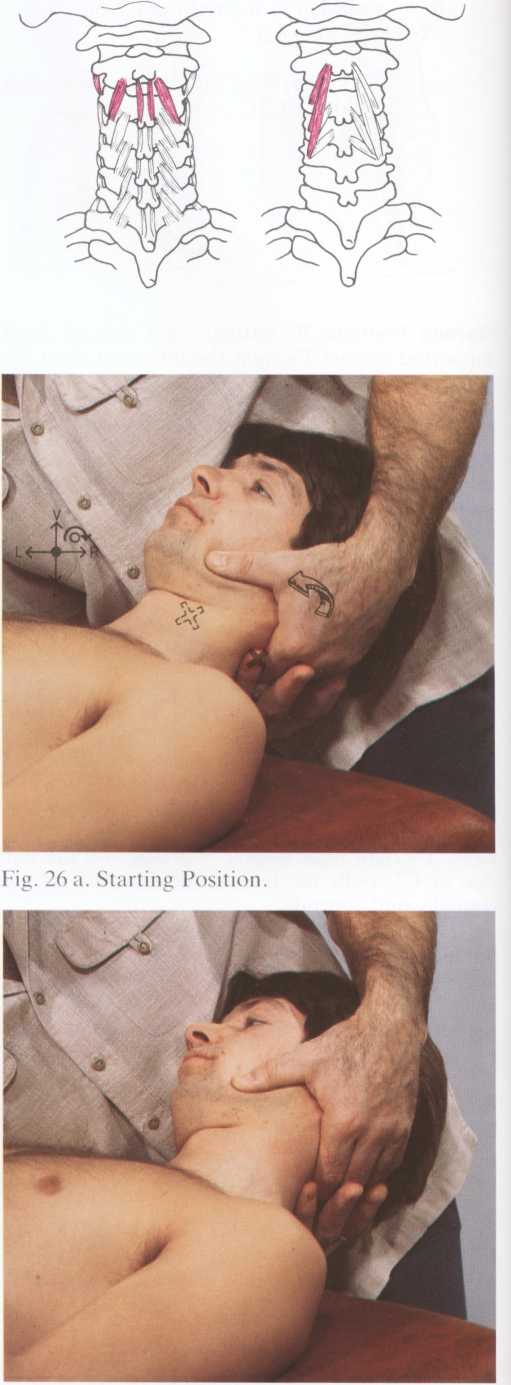42 (439)

3.3.2B.
Specific technique to increase ven-tral flexion with rotation and lateral flexion to the right of C2 on C3.
P supine.
(T “working” spccifically on the left side of C2).
Starting Position: P: Supine; head beyond end of couch with C3 positioned at couch edge; shoulders and thorax may be stabilized with a belt. T: Standing at head of couch, to the right of P’s head.
Grip: Ts left index finger lies along the spinous, articular and transverse processes on the left side of P’s axis (C2). P’s head is supported between Ts wrist/forearm and trunk. T’s right index finger stabilizes the spinous and articular processes on the left side of C3. T’s right thumb stabilizes the interior articular process on the right side of C3 (so as not to hinder the dorsal-caudal glide of the right C2 facet).
Procedurę: Using this grip, T applies traction, and then maintaining this traction, moves his/her body with P's head to gradually and fully ventrally fłex while rotating and laterally flexing C2 on C3 to the right. T's left index finger, “working” on the left side of C2, pulls the left articular process of C2 cranially and ventrally.
Stimulation of Antagonists: T retains grip. T then asks P to look downward to the right and then move his/her head further in the direction just stretched. T resists that movement to stimulate P's antagonists.
Notes: When moving the left articular facet of C2 cranially and ventrally (as in ventral flexion), the right articular facet moves caudally and dorsally (as in dorsal flexion).
To prevent compression of the right articular facets, lateral flexion to the right should always be preceded by rotation to the right such that the articular facets glide parallel to each other.

Fig. 26 b. Finał Position.
42
Wyszukiwarka
Podobne podstrony:
61 (265) 3.6.2B. Specific techniąue to increase dorsal flexion with rotation and lateral flex-ion to
43 (434) 3.3.2C. Specific technique to increase ven-tral flexion with rotation and Iateral flexion t
41 (472) 3.3.2A. Specific techniąue to increase ven-tral flexion with rotation and lateral flexion t
60 (278) 3.6.2A. Specific technique to increase dorsal flexion with rotation and lateral flex-ion to
62 (263) 3.6.2C. Specific techniąue to increase dorsal flexion with rotation and lateral flex-ion to
63 (253) 3.6.2D. Specific technique to increase dorsal flexion with rotation and lateral flex-ion to
32 (619) 3.2.2B. Specific techniąue to increase ven-tral flexion of the occiput on the atlas. P sitt
69 (224) 3.7.2B. Specific techniąue to increase dorsal flexion with rotation to the right and l
31 (637) 3.2.2A. Specific technique to increase ven-tral flexion of the occiput on the atlas. P sitt
99 (122) 5.2.2A. Specific techniąue to increase ven-tral flexion of Tl on T2. P supine. Starting Pos
47 (396) 3.5.2B. Specific techniąue to increase dorsal flexion of the occiput on the atlas. P sittin
33 (623) 3.2.2C. Specific techniąue to increase ven-tral flexion of the occiput on the atlas. P supi
34 (544) 3.2.3A. Specific technique to increase ven-tral flexion of the atlas on the axis. P sitting
35 (522) 3.2.3B. Specific techniąue to increase ven-tral flexion of the atlas on the axis. P supine.
36 (519) 3.2.4A. Specific technique to increase ven-tral flexion of C2 on C3. P sitting. Starting Po
37 (498) 3.2.4B. Specific techniąue to increase ven-tral flexion of C2 on C3. P supine. ► Starting P
76 (203) 3.9.1A. Specific techniąue to increase rotation to the right of the atlas on the axis Tract
77 (197) 3.9.IB. Specific techniąue to increase rota-tion to the right of the atlas on the axis. Tra
38 (492) 3.3.1A. Non-specific technique to increase ventral flexion with rotation and lateral f
więcej podobnych podstron